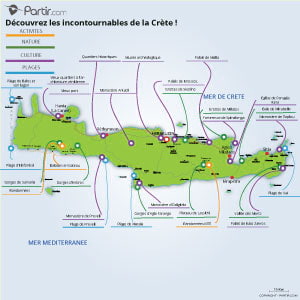The 14 best places to visit in Crete

With its many remains and mythological legends, a trip to Crete is like reading an exciting history book, so dive into this fascinating story by starting with the ascent of the Lassithi plateau. An immense wilderness scattered with white mills, it leads to the most famous cave on the island, the one where Zeus lived hidden to avoid being devoured by his father Cronos. Continue to turn the pages of the book to discover the Minoan period, of which the archaeological site of Knossos and the city of Heraklion are the perfect examples, then continue with the Venetian civilization, of which the old cities and ports of Rethymnon and Chania will not fail to seduce you. Make a good one in the future in the city of Matala, which was the meeting place for many hippies. Crete's historical and cultural heritage is also on display in the island's various museums, including the Religious Art Museum of the Preveli Monastery. Let us now leave history aside and discover Crete in a different way. Mountainous, the island hides splendid landscapes in its nooks and crannies. Like the Samaria and Ago Farango gorges where the hiking trails will take you to secret places of great beauty. Lovers of "corners of paradise" will find their happiness on the pink sandy beach of Elafonissi or in the lagoon of Balos whose turquoise and transparent waters are a delightful invitation to take a dip in the water. Despite an increasing number of visitors, there are still some authentic places where it is good to walk under the Cretan sun. This is the case for the town of Agios Nikolaos or Loutro, this charming little fishing village in the south-east of the island. After this overview, it is now up to you to write your own story.
Tourist attractions
Our selection of must-see places
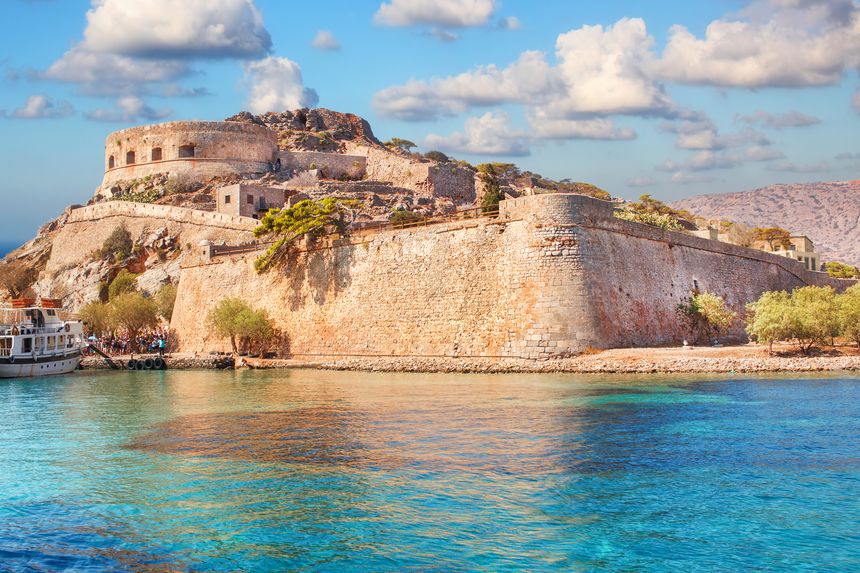

Spinalonga Island
Facing the small village of Elounda is Spinalonga Island , bearing the unlovely name “the island of lepers.” Originally a fortified islet built by the Venetians in the 16th century, it became a leper colony in the 20th century until its closure in 1957. Residents lived in deplorable conditions but, through their own efforts, ended their lives with a little more dignity. Only ruins now remain, but you can still wander the paths which cover the island. You will notice that nature is reclaiming its rights over the island as demonstrated by the prickly pears growing here and there.
Art & Culture | Island | Nature
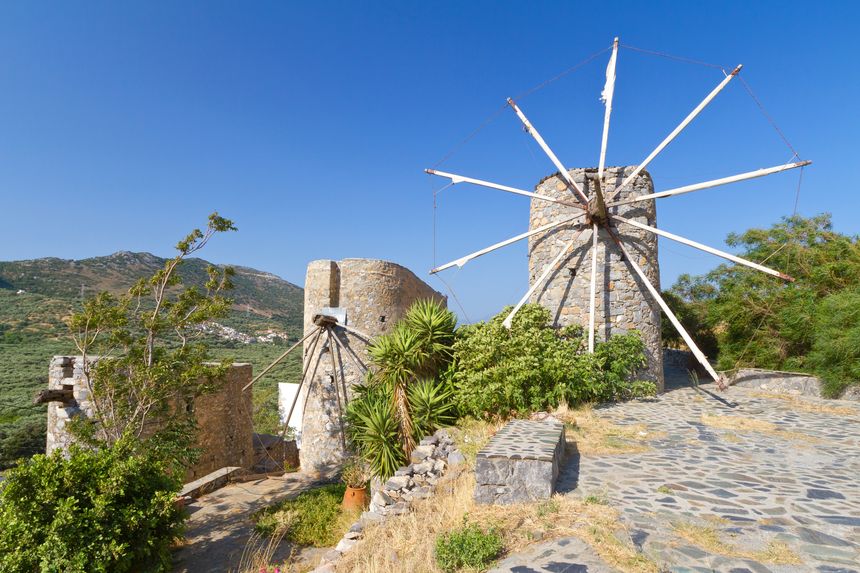

Lassithi Plateau
The Lassithi Plateau, where fruit and cereals are grown is scattered with windmills. No longer in use, they do bring a certain charm to the area. The area’s chief asset is the road which leads you there, which has magnificent views over the valley and the mountain range. Every bend in the road reveals a new vista, each as lovely as the last. Make sure you stop in one of the picturesque villages such as Agios Gergios which has a museum dedicated to the plateau, or Krassi where a giant plane, the oldest tree in Crete grows. Another attraction of the area is the Dicte Cave where, according to legend, Zeus was born. His mother Rhea wanted to protect him from his father Chronos, who would have eaten the young boy! Access to the cave is in two stages. First a reasonably difficult twenty minute climb to reach the cave then a steep descent to the galleries adorned with stalactites and stalagmites.
Mountain | Nature | Viewpoint | Nice village
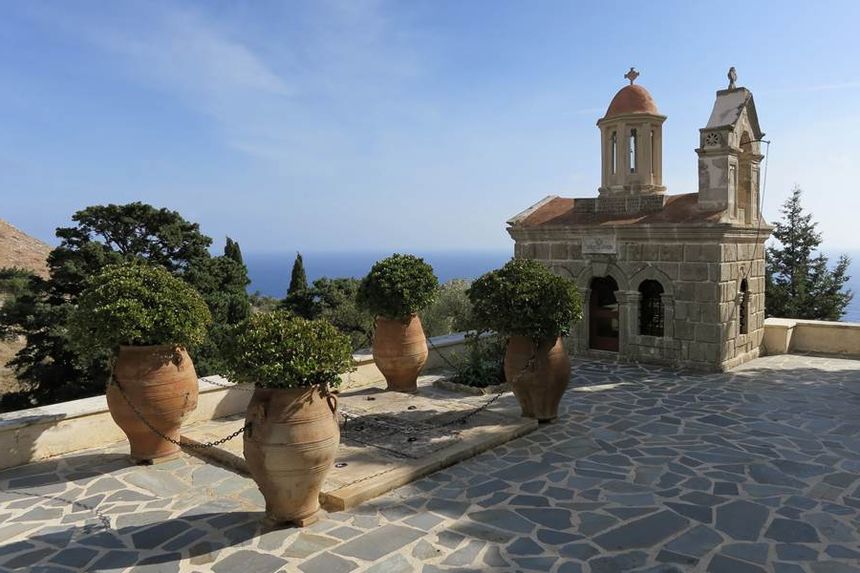

Preveli Monastery
This monastery is composed of two buildings. The most visited, the Piso Moni Preveli, was built facing the Libyan Sea in the 16 th Century. Her you can observe different aspects of life in the monastery, the beautiful church with two naves and the museum of religious art. After a visit to Preveli, don’t miss the beautiful, large, natural beach which shares its name. The Kourtalioti River, flows through the gorge of the same name and enters the sea here on the white sand beach with its grove of palm trees. You can walk upstream and admire the luxuriant vegetation.
Monuments | Heritage | Art & Culture
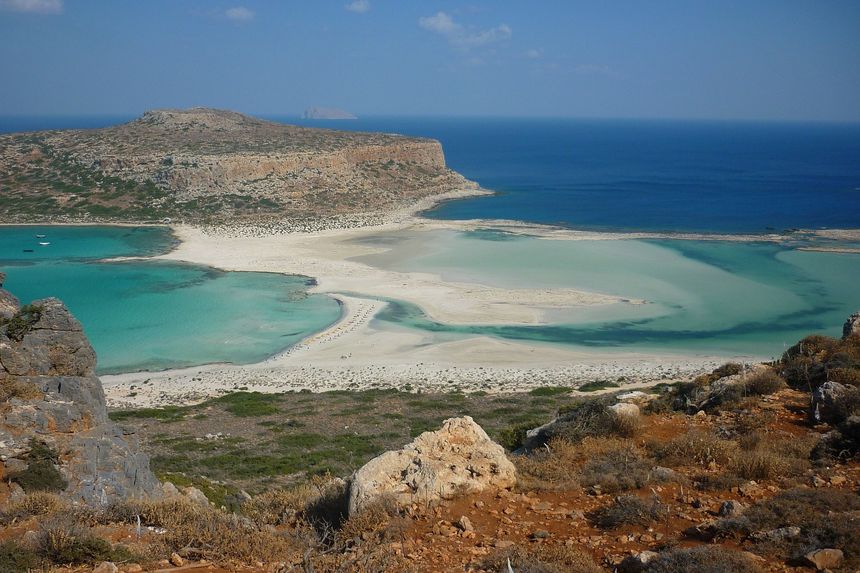

Balos
Balos Lagoon is heavenly. However, you have to earn your place in this paradise by walking nearly five miles along a stony path, then for another 30 minutes to arrive at this exceptionally beautiful place. It is one of the most beautiful beaches in Crete. The shallow water is warm and transparent turquoise.
Natural wonders | Sea | Beach
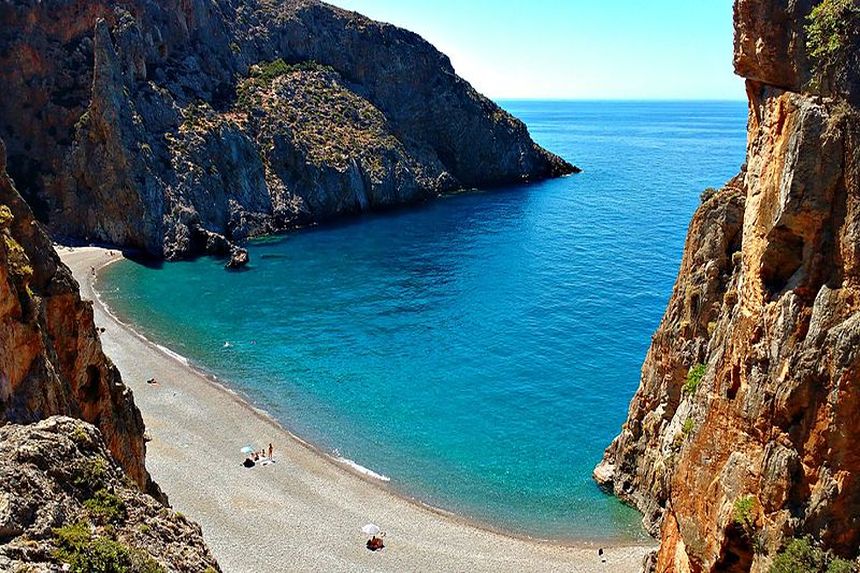

Agio Farango gorges
After a visit to the Odigitria Monastery, take the opportunity to discover the Agiofarango Gorge just two and a half miles away. This magnificent trail through olive groves and oleander (accompanied by goats), opens onto the beautiful pebble beach at Kaloi Limenès. The walk to the beach is relatively easy and takes about one hour. You will have the beach to yourselves with the exception of a few rock climbers, perhaps. Along the path, steep rock walls pitted with caves rise above. Just 300 metres from the beach is the 13th century Agios Antonios church. It’s a lovely walk in the magnificent countryside.
Natural wonders | Sea | Hiking
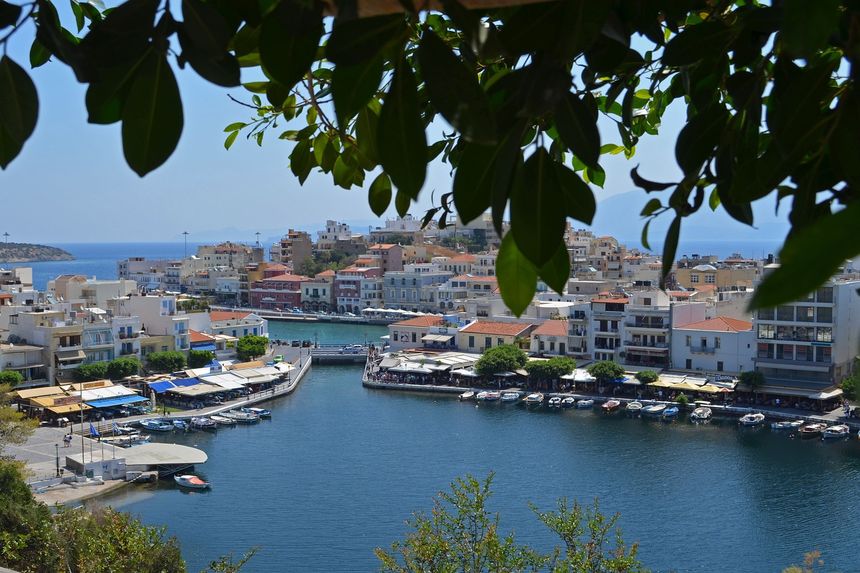

Agios Nikolaos
The beauty of its beaches and its nightlife make Agios Nikolaos a favourite haunt of visitors to the island.You’ll fall under the spell of this small town with its narrow canal linking the lake to the sea and its charming port. Enjoy the view of the multicoloured boats from one of the numerous cafés.
Relaxation | Sea | Beaches & Seaside resort | Port
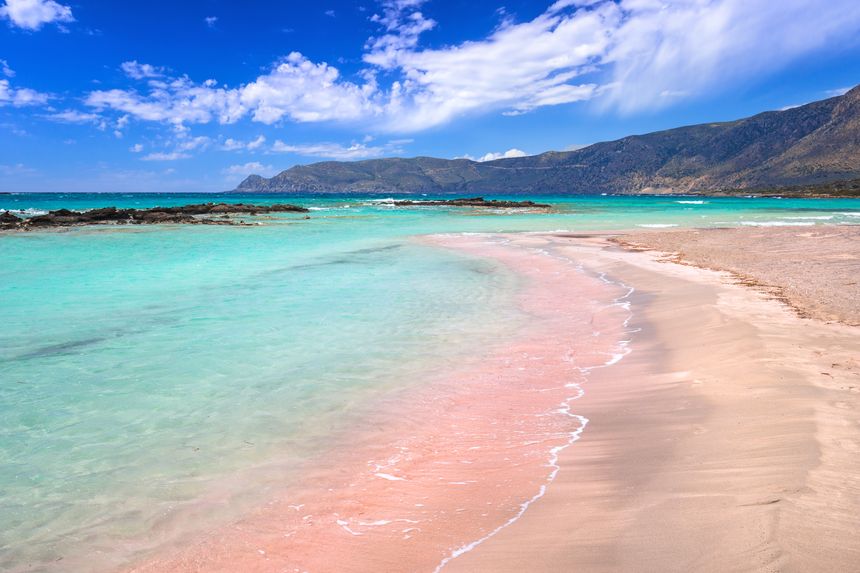

Elafonissi
A little corner of paradise on earth, Elafonissi is said to be the most beautiful beach on the island and has the nickname “Caribbean Crete,” To get there, requires you to walk or swim a 100 metre passage, depending on the season. The water is transparent and shallow with a pink tinge in places. The area forms part of the European Natura scheme for the protection of Biodiversity.
Beach | Sea | Nature wonders
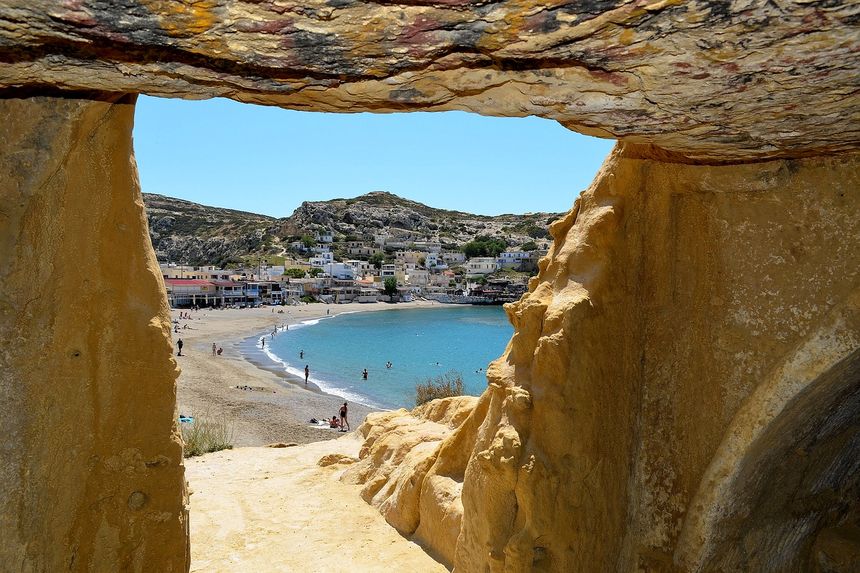

Matala
The small village of Matala was, during the ‘60s and ‘70s, a meeting place for hippies from all over the world, who would throng he caves in Matala Bay. Today, the caves are fenced off and only open to visitors during the day. Every June, a festival takes place and the backstreets regain their “cool vibes.” The shops are filled with local products and flower-power merchandise, and you’ll see a few VW love bugs as well as plenty of replicas in the shops.
Nice villages | Sea | Beaches & Seaside resort | Art & Culture | Natural wonders
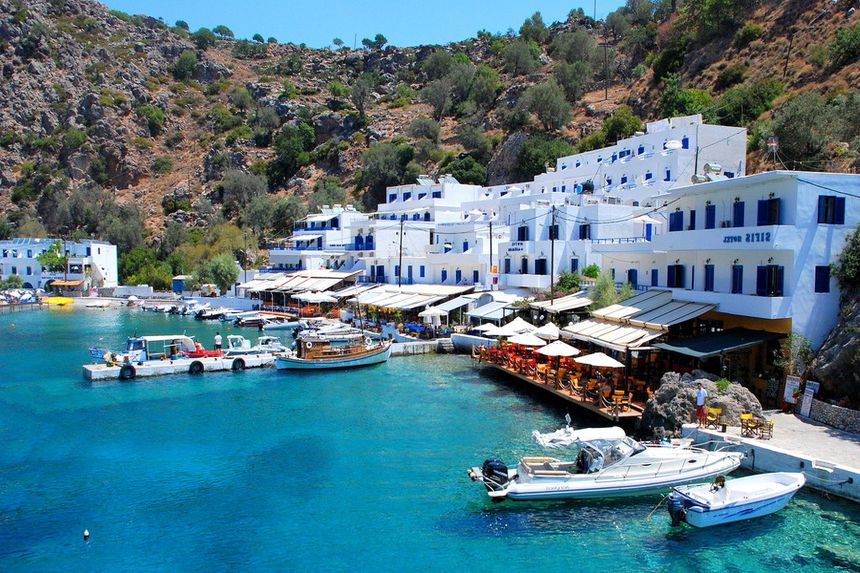

Loutro
Hop on board for a trip to Chora Skafion and discover the authentic charm of the fishing villages along the south-west coast. Make a point of stopping in Loutro. There are no large hotels, just a Cretan fishing village with small boats and true calm. The village is only accessible by boat or on foot.
Nice villages | Sea | Port | Relax
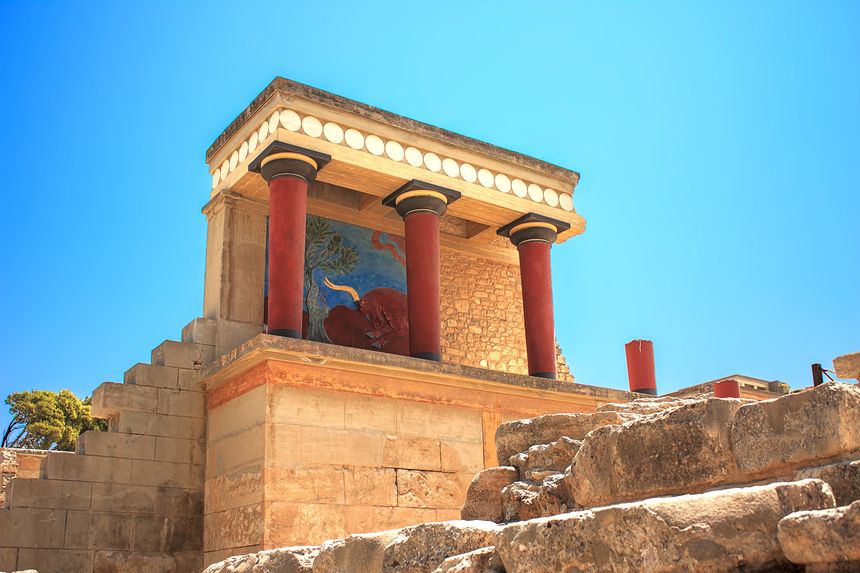

Knossos
Knossos is a major archaeological site which bears witness to the might of the Minoa civilisation. Built from around 1,700 BCE, the palace is a labyrinth of paths and innumerable interconnecting rooms. It was discovered at the end of the 19 th century and is bound to the legend of King Minos.
UNESCO World Heritage | Monuments | Archaeological site | Art & Culture
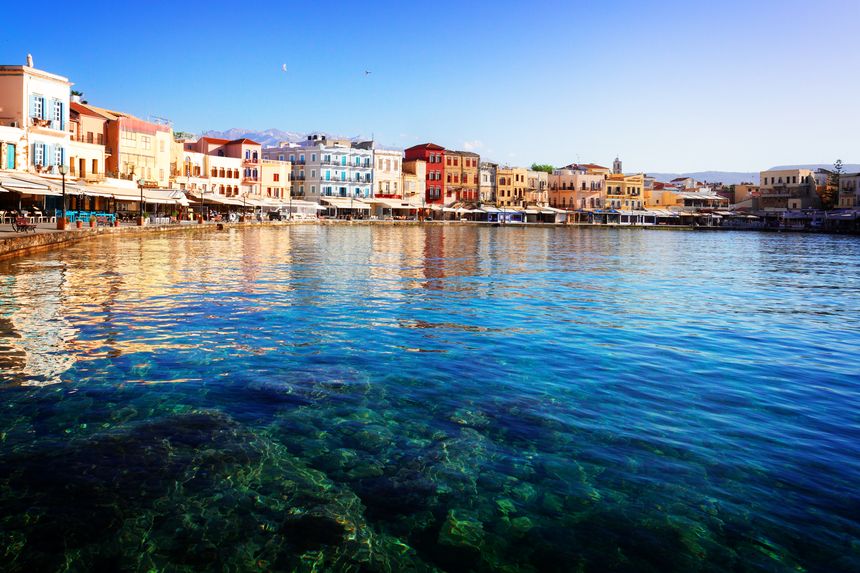

Chania
Chania is said to be one of the most beautiful towns on the island and has grand monuments from the Byzantine, Venetian and Ottoman eras. Stroll through the picturesque backstreets, sample the local delicacies and a glass of something special in
the old Venetian port and you will fall under its charming spell. Some of the island’s most beautiful beaches can be found to the west of the town.
The old town
Surrounding the port, the old town’s backstreets are full of Venetian and Ottoman architecture. There are churches, mosques and pretty little squares where cafés serve
where local dishes and you try a glass of the famous raki, Crete’s favourite tipple. And if you want to take home a few souvenirs of the island, the numerous shops stock local crafts such as handbags, fabrics and, of course, olive oil.
Venetian Port
The walk along the port is very pleasant. There are a number of small restaurants and souvenir shops, and a very beautiful mosque too, the Janissaries Mosque built in 1645. Little fishing boats and larger vessels occupy the port which is dominated by a 16th century lighthouse. Take the opportunity to visit the Nautical Museum with its exhibition of ships and its reproduction of a Minoan boat. And if you don’t want to walk, you can discover the port and old town by horse-drawn carriage.
Monuments | Port | Architecture | Craftsmanship | Relaxation
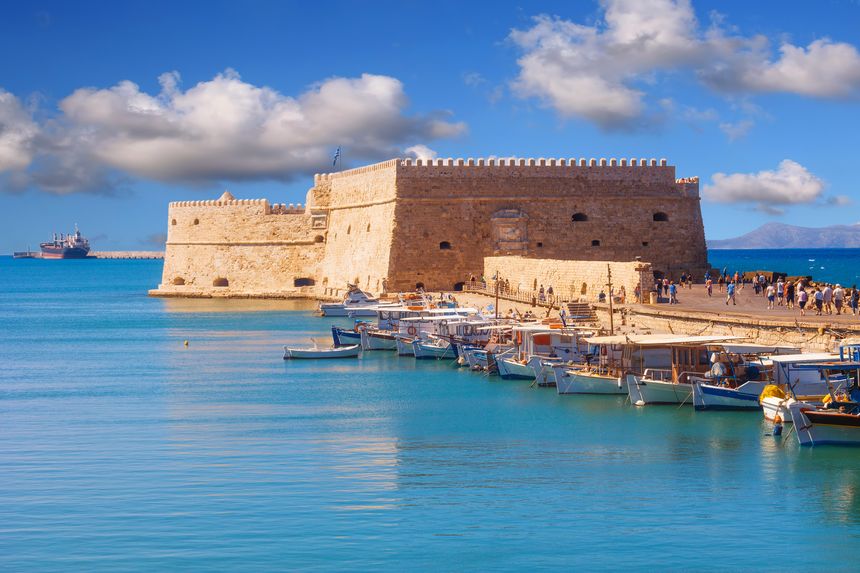

Heraklion
Heraklion, the capital of Crete is a port town surrounded by Venetian ramparts. Although it does not have quite the same historic charm as Chania and Rethymnon, its archaeological museum has the finest collection of Minoan artefacts in Crete. Another interesting museum is the Palace of Knossos, the town’s symbolic archaeological site, just a few miles away.
Museums | Port | Architecture | Art & Culture
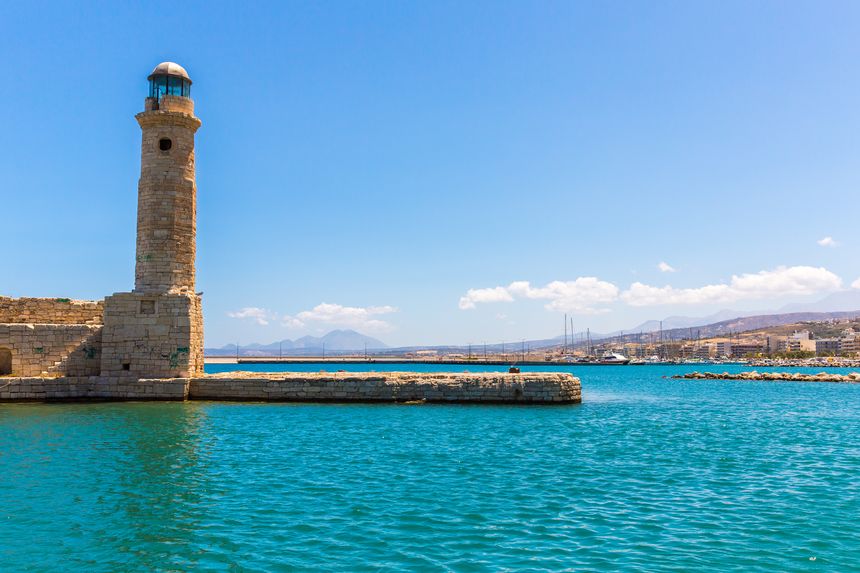

Rethymnon
Like Chania, Rethymnon is an utterly charming town with narrow backstreets where you will come across numerous resplendent monuments from the Venetian era. Other delights to discover are the fortress, the small Venetian fishing port and the Tis Nerantzes mosque. The Fortezza The fortress is the town’s emblem. Built on Palaiokastro Hill during the 16th century, the fortress was built to protect the townspeople from the Ottoman invasion. Composed of four ramparts and 1,300 metres long, it offers the opportunity for a pleasant stroll with views of the town and the sea. The well-conserved interior houses the Sultan Ibrahim Mosque and munitions depot (both host exhibition spaces), two churches and the ruins of dwellings. The old town. Take the time to wander and lose yourself in the colourful, flower-filled backstreets of the old town. Look above to admire the architectural façades of the Venetian houses. You’ll also find plenty of touristic boutiques and restaurants where you can sample delicious Cretan cuisine. You will come across beautiful Byzantine and Venetian churches as well as mosques, most notably Nerantzes Mosque which was originally the Venetian church of Santa Maria. The Venetian fishing port After a stroll through the old town, head towards the small fishing port with its 15th-century Venetian lighthouse, for a glass of raki and a plate of seafood. The restaurants which throng this area won’t hesitate to lure in if you hover around their doors. You will find several traditional fishing boats here and you can take excursions to other ports on the island.
Monuments | Port | Architecture | Craftsmanship | Relaxation
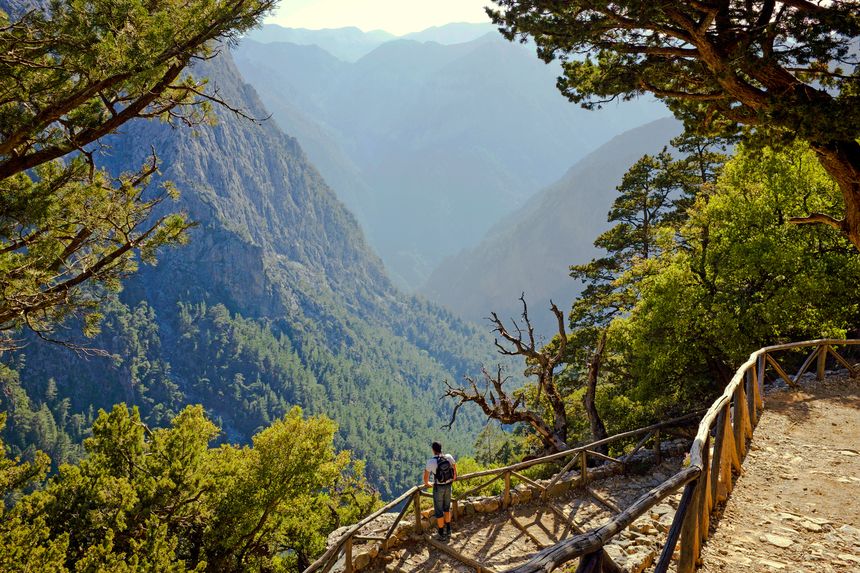

Samaria Gorge
Take a hike through the exceptional Samaria Gorge, a 10 mile long canyon. Its narrowest point at 2.5 metres wide is know as the Iron Gates. The path through the canyon is well maintained and you’ll even find freshwater springs to drink from. The gorge has been recognised as a UNESCO biosphere reserve. Be aware that the gorge is only accessible from May to the end of October and may even be closed during this period in times of heavy rain. Make inquiries before you set out.
Hiking | UNESCO World Heritage | Nature reserve | Nature

Travel content editor
Alexandra's review
If like me, you enjoy ancient ruins, you will love Crete. I came to Crete by chance, having had to forgo another destination. But Crete was written in my stars, it seems. Crete has everything to make a great holiday - cultural tours, historic towns, small fishing villages and lazy days on the beach. Ideally, you should hire a car which will give you greater freedom and allow you to explore remote villages (and to find pleasant places to swim). During my stay, I travelled by bus which is cheaper but takes considerably longer. Moreover, rigorous punctuality is not always the case and a 45 minute wait in the blazing sun quickly becomes infernal, especially given that hitch- hiking is not commonplace. Even if Crete only measures 160 miles east to west, don’t expect to make the journey in a single trip. There is so much to take in and you will want to make several stops. But do take care on the roads as the Cretans have their own distinctive style of driving. If you are only visiting for a week, I suggest you visit either the east or the west of the island. If you are staying for a fortnight, base yourself in Heraklion, more or less at the centre of the island, and venture outwards from there. Crete has a Mediterranean climate and the summers are very hot. Many sites and attractions are outside and may not have any shade. Walking in 35 degree heat is not very pleasant. If you can visit in springtime or early autumn, these are the best times in terms of temperature and numbers of tourists.
You may also like
-
Flights to Crete
All you need to know before buying your plane ticket
-
Tourist maps
Must-see and secret places chosen by our experts from Crete.
-
Hotel or vacation rental?
Find your dream accommodation in Crete at the best price...
-
When to go?
Be sure to visit Crete at the best time of year!
and why not...
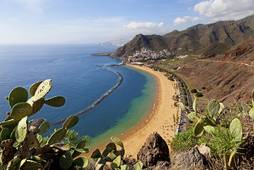 the Canary Islands
the Canary Islands


